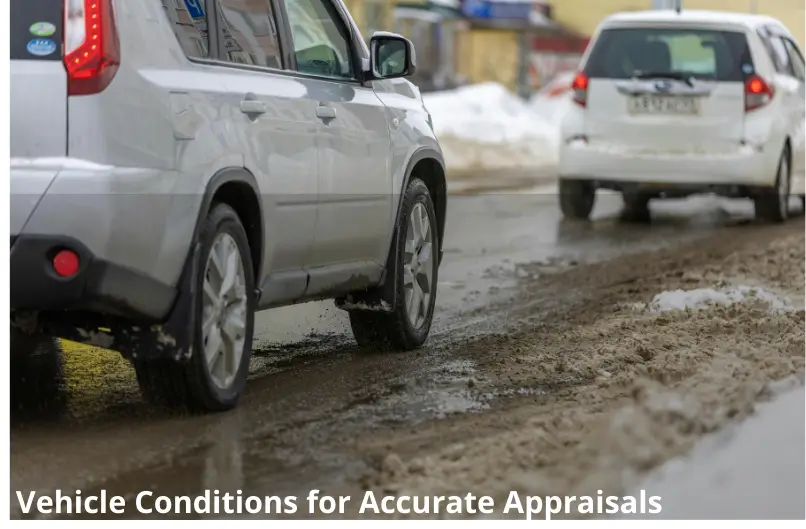DOWNLOAD: “Understanding Vehicle Conditions for Accurate Appraisals”.PDF
When assessing the value of a car, the condition is one of the most important factors. The process of determining a vehicle’s worth involves understanding its overall state, from the exterior to the mechanical components. Below is a detailed breakdown of the categories typically used to evaluate a car’s condition and how each can influence its market value:
1. Brand New
A Brand New car has never been driven, has zero miles on the odometer, and is in perfect, untitled condition. It’s a fresh vehicle straight from the manufacturer with no signs of wear or damage. This represents the highest possible level of quality, reflecting the car’s original factory condition.
2. Showroom Condition
Vehicles in Showroom Condition are nearly flawless, with only the slightest signs of wear. These cars might have been used as display models at dealerships but still retain their excellent condition, with no major defects. They are virtually indistinguishable from new vehicles and highlight the car’s ideal performance and aesthetic appeal.
3. Restored Original
A Restored Original vehicle has been thoroughly refurbished to its former glory. The restoration process uses either original parts or high-quality replacements, ensuring that both the car’s appearance and performance are brought back to original factory specifications. This category appeals to collectors or vintage car enthusiasts who desire a vehicle that looks and functions like new.
4. Restomod
Restomod cars combine classic designs with modern enhancements. These vehicles retain their vintage exterior but are upgraded with contemporary technology, improved performance components, and modernized interiors. The result is a vehicle that balances the nostalgic appeal of a classic car with the comfort and reliability of modern engineering.
5. Excellent Condition
An Excellent Condition car has been well-maintained, showing no significant mechanical issues. It may have some minor cosmetic imperfections, but it is otherwise in top working order and ready for use. These cars are reliable and can be driven without the need for major repairs.
6. Good Condition
A vehicle in Good Condition operates properly with minor cosmetic flaws and normal wear and tear for its age. While it may exhibit some signs of use, it remains functional and safe for everyday driving. There are no major issues that impact the vehicle’s usability or performance.
7. Fair Condition
Vehicles in Fair Condition show noticeable signs of wear, either cosmetically or mechanically. While still operable and roadworthy, these cars may need repairs to restore full performance. They are often older models or those with significant mileage but still have value with proper care and attention.
8. Poor Condition
A car in Poor Condition has considerable wear or significant mechanical failure, making it unreliable for regular use. These vehicles may require extensive repairs to become roadworthy again. They are generally not suitable for daily driving unless they undergo major restoration work. In many cases, the cost to repair may exceed the vehicle’s value.
9. Inoperable
Inoperable vehicles cannot be driven due to serious mechanical issues, missing parts, or other critical problems. Restoration might require substantial time and investment, making these vehicles impractical for everyday use without significant repairs. When considering the sale of an inoperable car, it’s important to factor in the cost of potential repairs.
10. Parts Car
A Parts Car is a vehicle that is no longer functioning as a whole but can still be valuable for its individual components. Even if the car isn’t worth restoring, its parts may be useful for other vehicles. Buyers often look for parts cars when searching for specific components for repairs or restorations.
11. Junk
Junk cars are beyond repair and are typically valued for their scrap metal and recyclable materials. They are no longer operational and are usually sold to junkyards or recycling centers. While these vehicles have little value as functioning cars, they may still be worth something based on the raw materials they contain.
Why Vehicle Condition is Key to Accurate Valuation
The condition of a vehicle plays a crucial role in determining its actual market value. Whether you are buying, selling, or insuring a car, a clear understanding of the vehicle’s state is essential for making informed decisions.
These standardized categories are helpful in providing an objective assessment of a car’s value, making the appraisal process transparent and reliable. By using these criteria, it’s possible to obtain a fair and accurate evaluation of a vehicle’s worth, regardless of its condition.
Want to learn more or get your vehicle appraised? Visit TrueAppraisal today to discover your car’s true worth!

Conclusion
Knowing the condition of a vehicle is essential for understanding its true market value. From brand new to junk, every car has a value that is directly impacted by its condition. By using these well-defined categories, you can ensure that your appraisal is accurate, whether you are looking to buy, sell, or insure a car.
Take the guesswork out of vehicle valuation by understanding these categories and their importance. With a proper evaluation, you can make more informed decisions and maximize the value of your car, no matter its condition.





